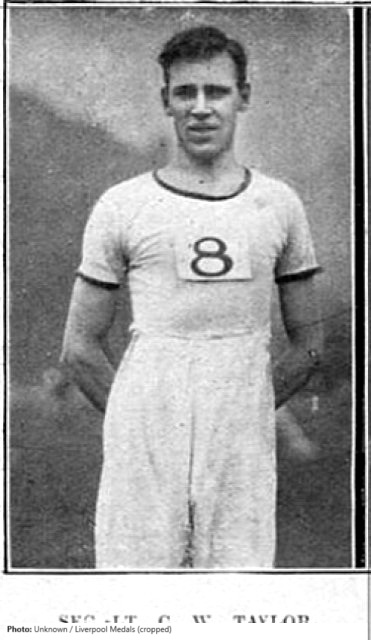Clive Taylor

Biographical information
| Roles | Non-starter |
|---|---|
| Sex | Male |
| Full name | Clive Wailes•Taylor |
| Used name | Clive•Taylor |
| Born | 8 May 1891 in Kidsgrove, England (GBR) |
| Died | 25 February 1917 in ? (FRA) |
| Affiliations | Polytechnic Harriers, Westminster (GBR) / Surrey AC, Kingston-upon-Thames (GBR) |
| NOC |  Great Britain Great Britain |
Biography
Clive Taylor was the youngest of six children, and was just eight-years-of-age when his father died. At the age of 16, Clive got a job as a clerk in the Post Office, before later working in their Savings Bank Department in London. A keen athlete, he started as a sprinter with the Polytechnic Harriers before turning to the high jump in 1909. The following year, because of birth eligibility, he won the Northern Counties high jump title, but was then beaten by Howard Baker at that year’s AAAs Championships. Baker also beat Taylor into second place in 1912.
After the Stockholm Olympics, Taylor reverted to serious sprinting again, and at Stamford Bridge on 13 September 1913 was a member of the 8-man Polytechnic Harriers team, along with Willie Applegarth, that broke the world mile relay record with a time of 2:59.0. in the last AAAs before World War I, in 1914, Taylor lost by inches to Applegarth in the 100 yards final. Taylor and Applegarth were the only two non-Americans on the list of the world’s fastest men over 100 yards in 1914.
During the War, Taylor served with the Royal Fusiliers as a second lieutenant and in November 1916 was severely injured in action in France. He was hospitalized for three months before succumbing to his injuries in February 1917. He was awarded the Military Cross for conspicuous gallantry in action just days before his death.
Results
| Games | Discipline (Sport) / Event | NOC / Team | Pos | Medal | As | |
|---|---|---|---|---|---|---|
| 1912 Summer Olympics | Athletics |  GBR GBR |
Clive Taylor | |||
| High Jump, Men (Olympic) | ||||||
| Standing High Jump, Men (Olympic) |